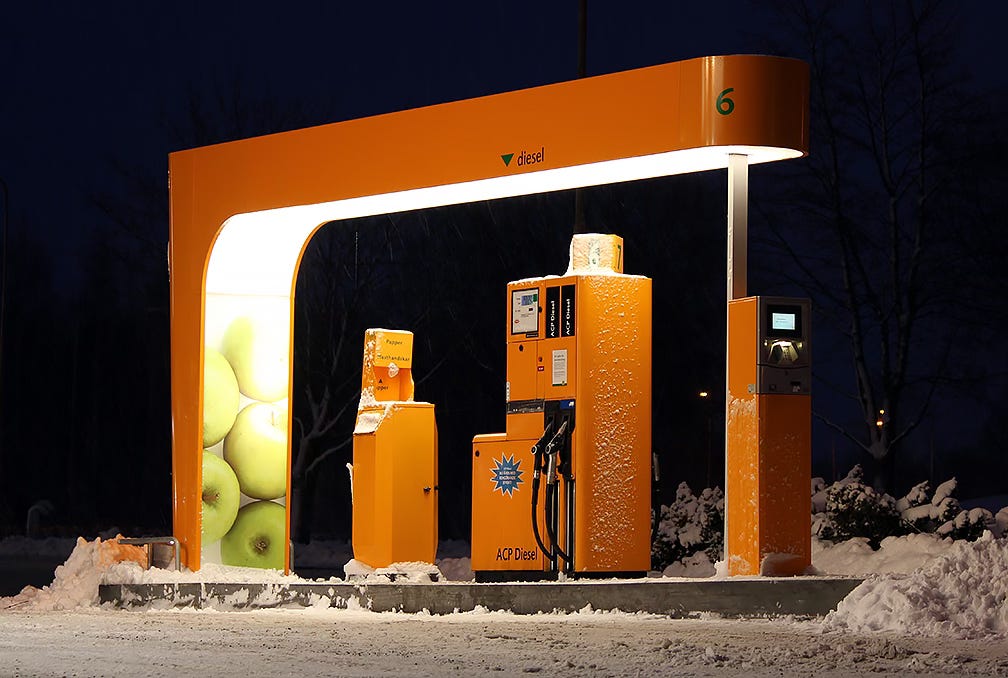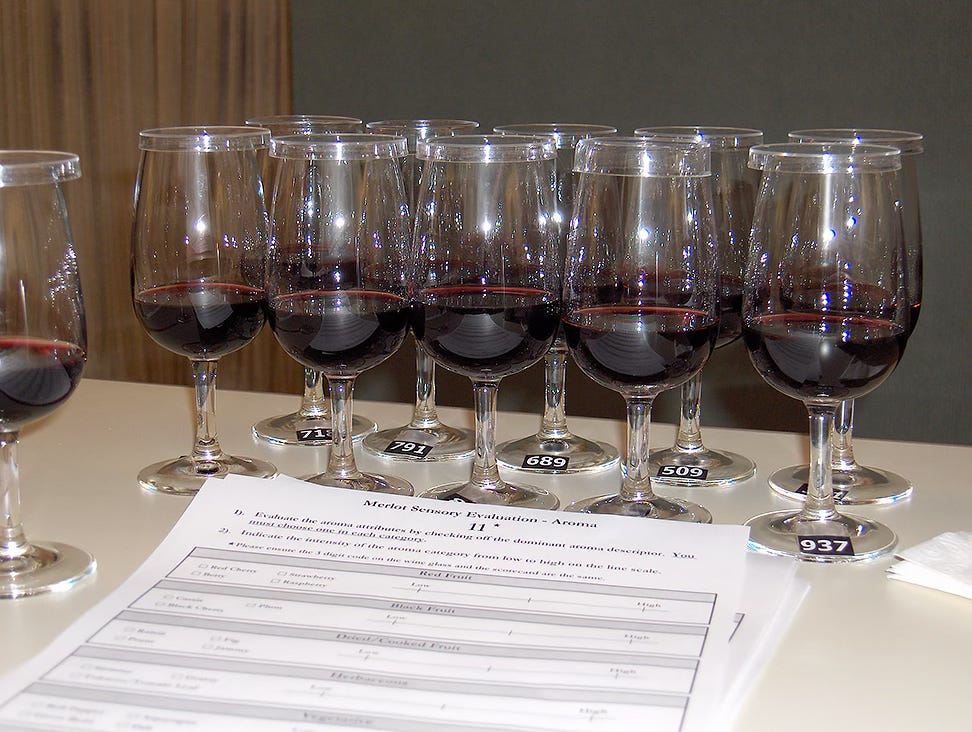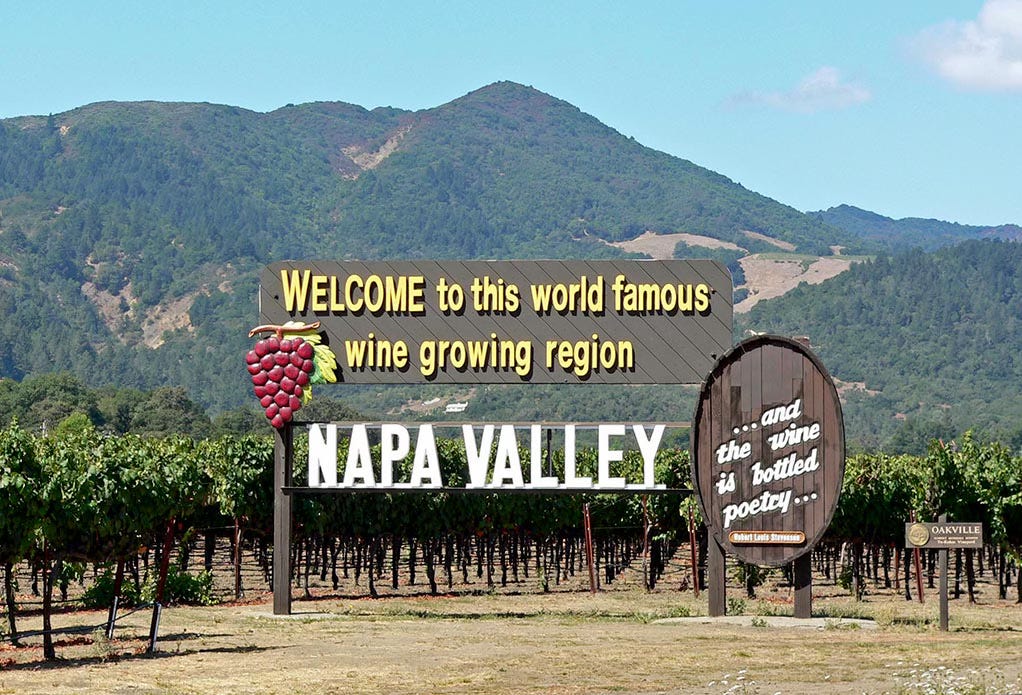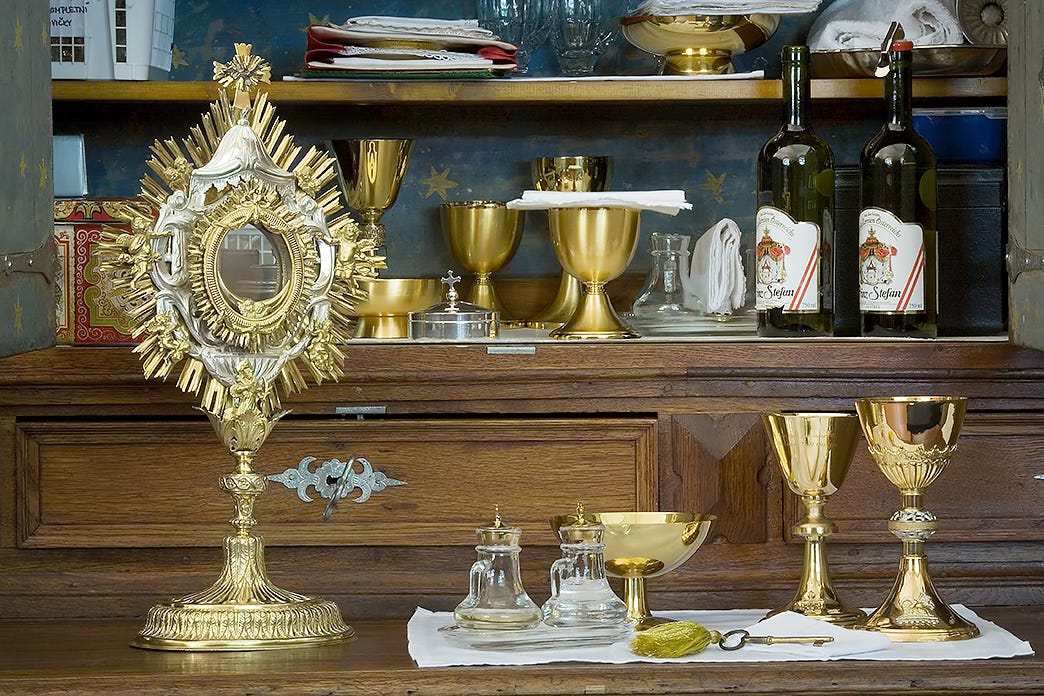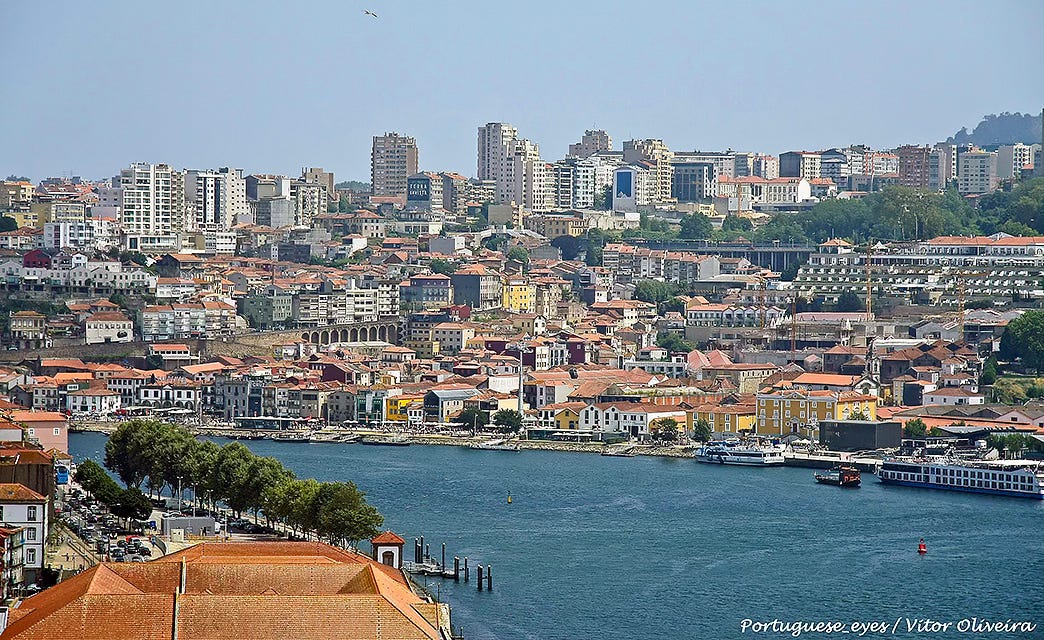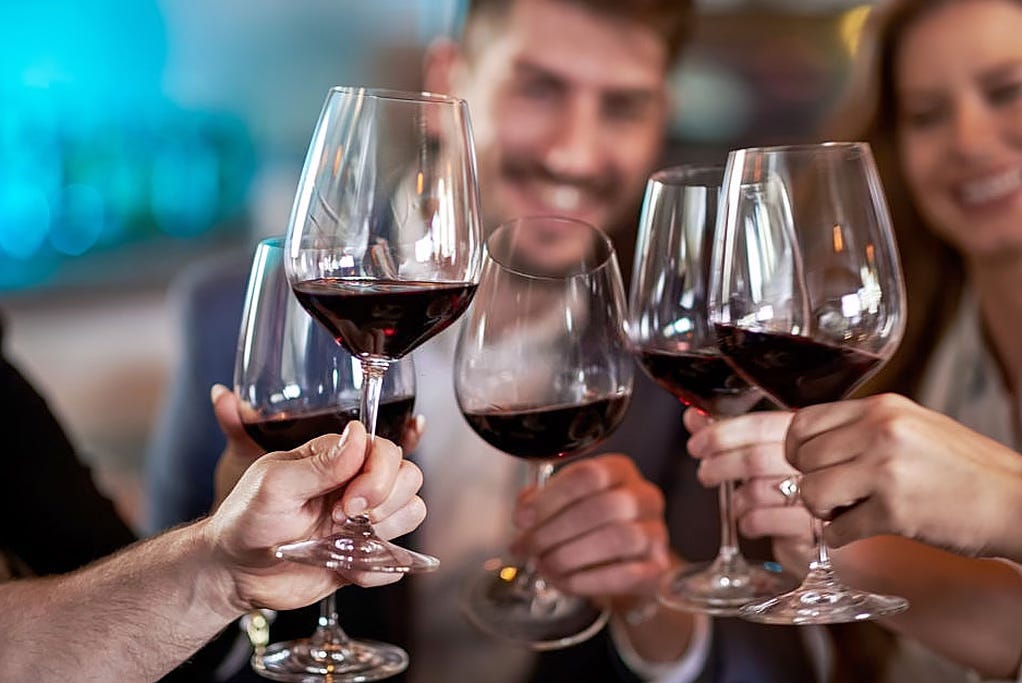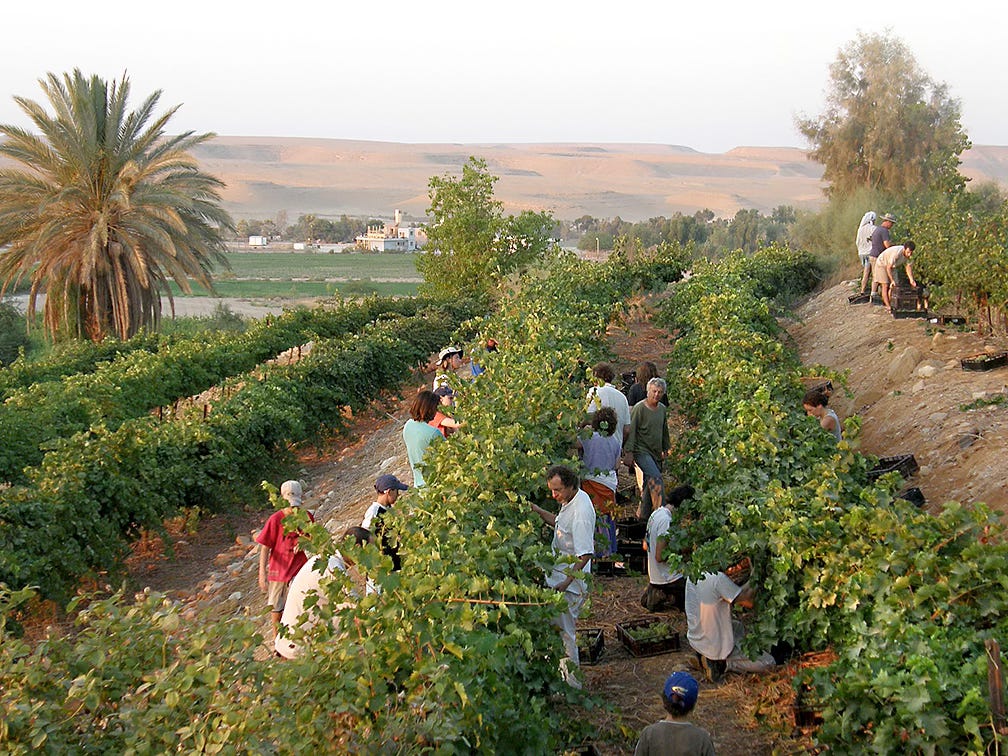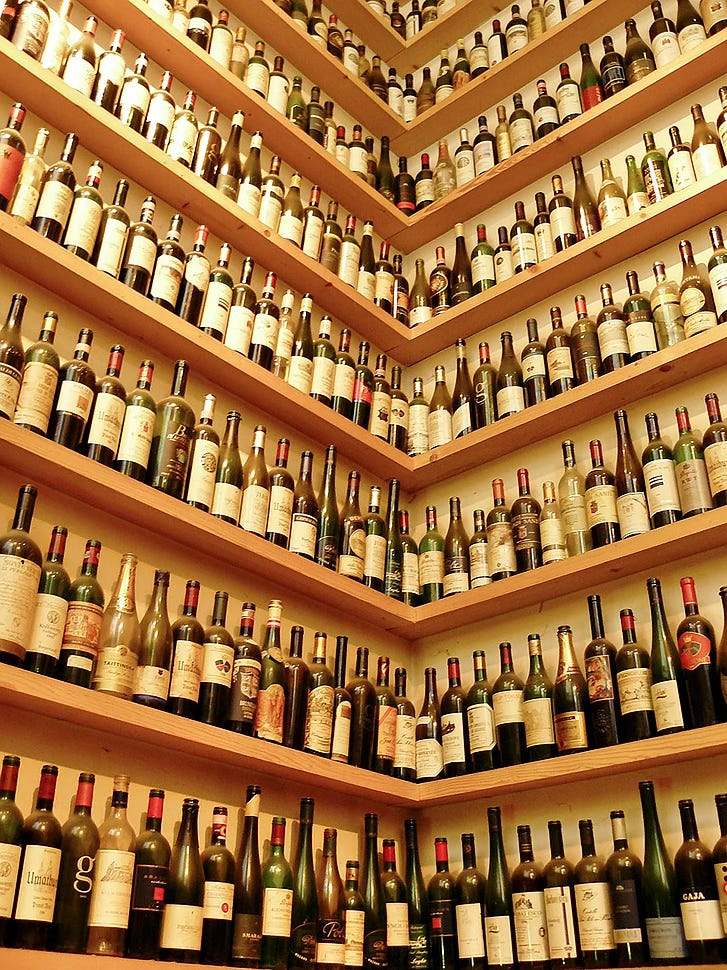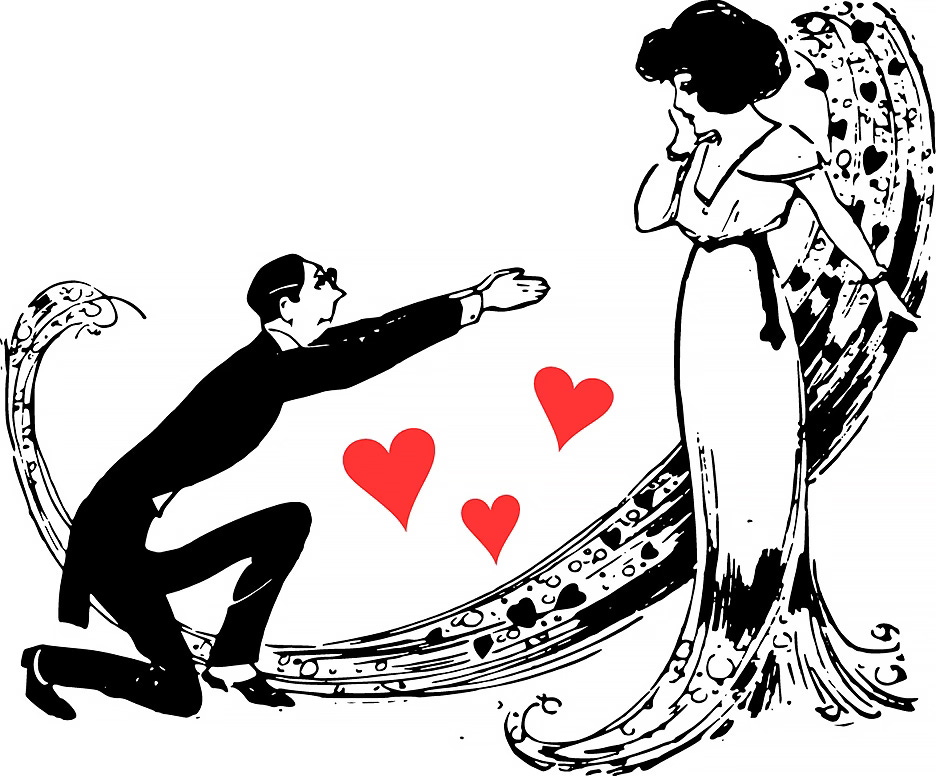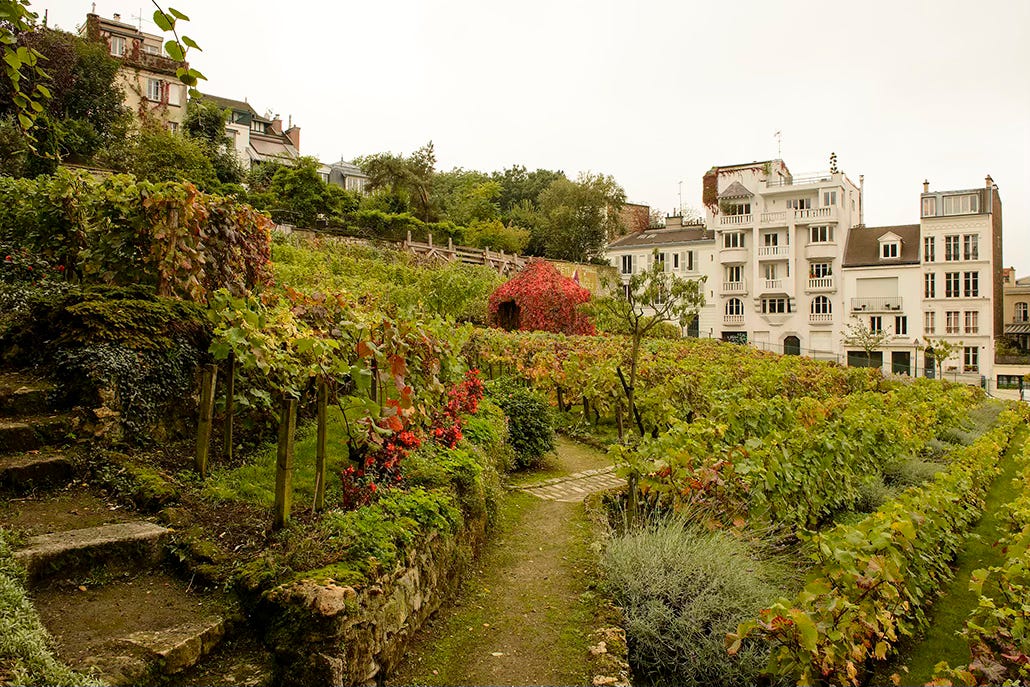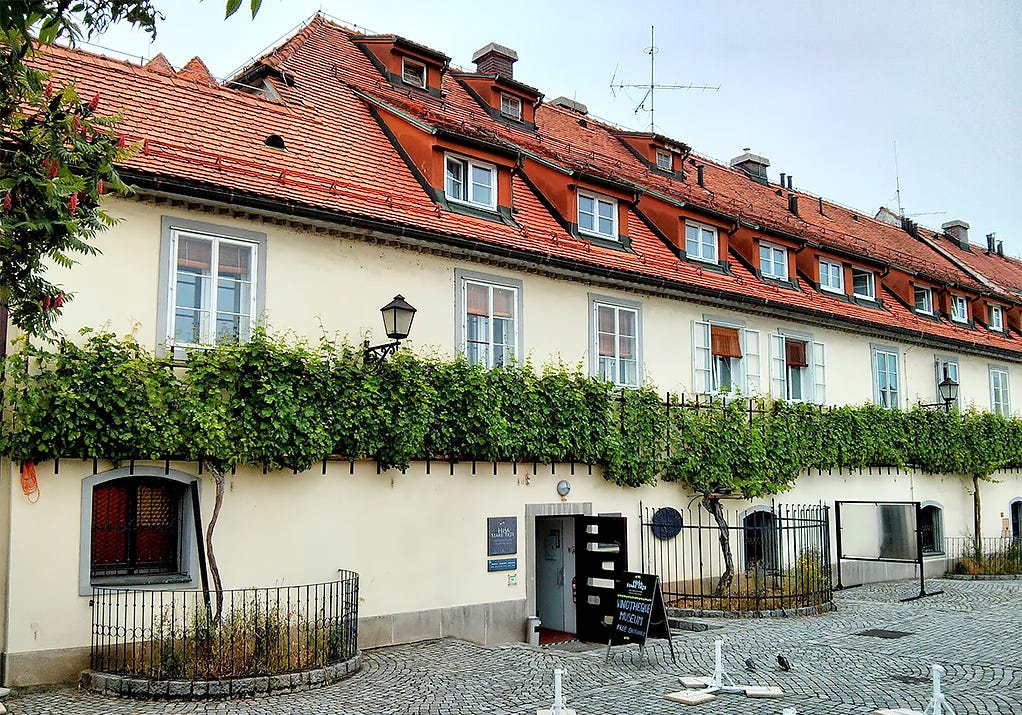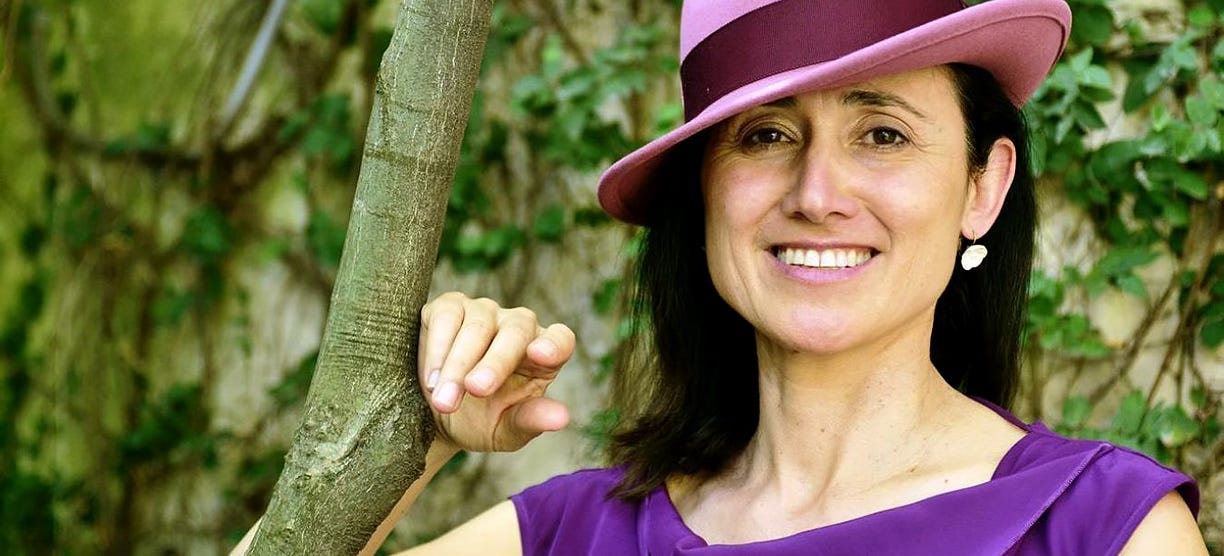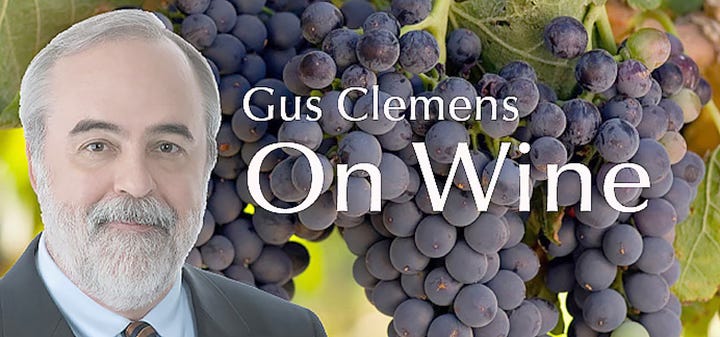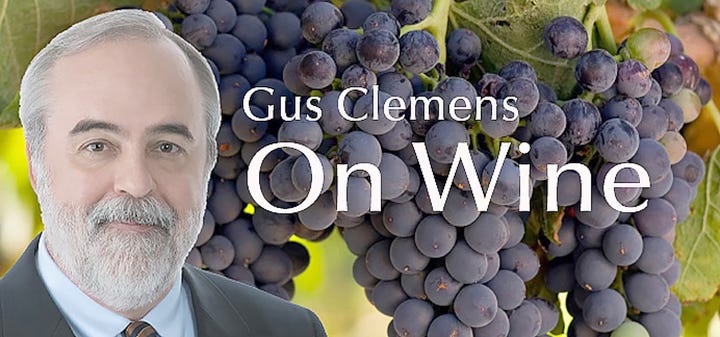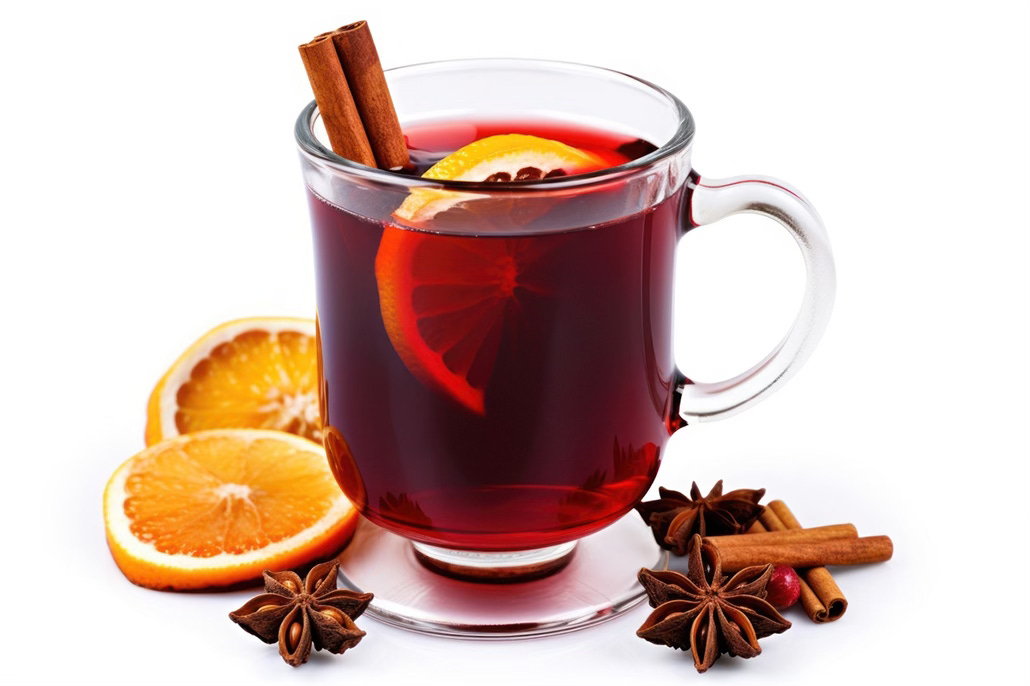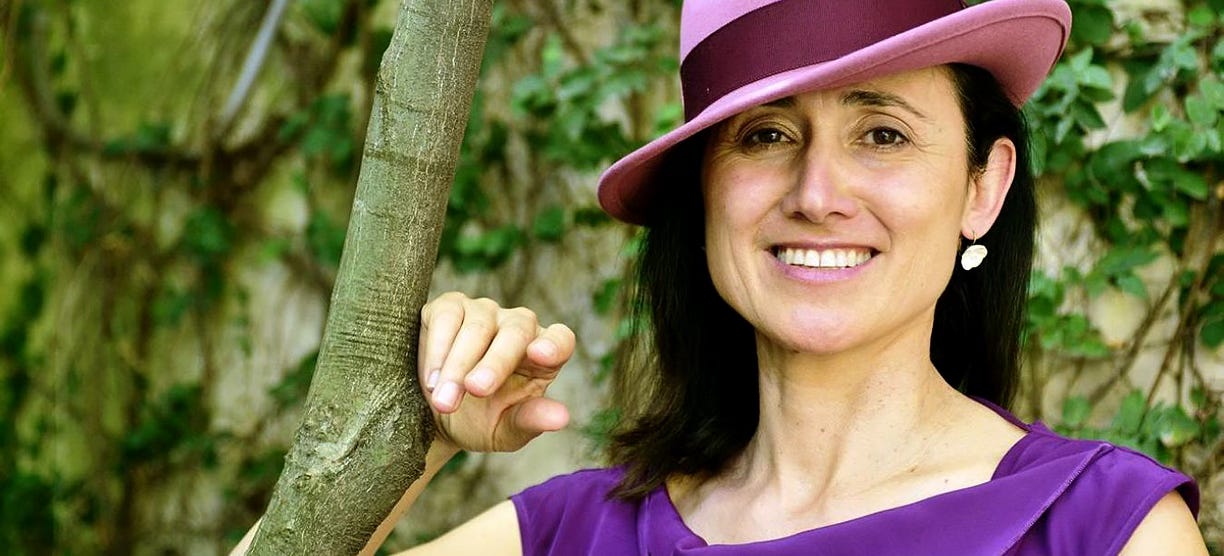Discover Gus Clemens on Wine explores and explains the world of wine in simple, humorous, fun posts
Gus Clemens on Wine explores and explains the world of wine in simple, humorous, fun posts

115 Episodes
Reverse
This is the weekly columnIn our investigation of wine descriptors, we continue our plunge into wine’s weird words.• Petrol/diesel: Associated with riesling. Aroma is not the smell you get filling your farm truck, but does suggest diesel or gasoline. It is caused by good-thing antioxidant TDN (1,1,6-trimethyl-1,2-dihydronaphthalene if you are a chemist geek), which forms from beta carotene and lutein as riesling ages. It is a distinctive, distinguishing marker for those identifying riesling in blind tastings. It also blows away after exposure to air.• Burnt rubber: Associated with syrah, also with South African wines. South Africans took umbrage when an English critic used the descriptor. “We prefer that people use the term acrid rather than burnt rubber,” averred a spokesperson for Wines of South Africa. Current descriptor preferred by wineries for this nose note: “sun-dried tomatoes.”• Tar: Associated with nebbiolo (Barolo/Barbaresco) and syrah—means aromas and flavors reminiscent of tar. Who eats or smells tar to find out? Some claim it describes a mix of meat and black pepper. Remember, smell is at least 75% of taste, so the “taste” of tar really is a slight—and slight is key—aroma of tar.• Pencil shavings: Associated with cabernet sauvignon and petit verdot: hints of cedar or eucalyptus wood. Cigar box also associated with this nose nuance. Think of sharpening the #2 in the third grade. It is a mineral smokiness similar to graphite. Engendered either from tannins in the wine or the wine’s exposure to oak during the winemaking process, to put a fine point on it.Tasting notes• Benziger Family Winery Chardonnay 2022: Sonoma chard—lively acidity frames citrus, apple, and stone fruit. $14-16 Link to my review• Monteabellón Tempranillo 5 Meses en Barrica, Ribera del Duero 2020: Easy-going tempranillo effort with refreshing acidity. $14-16 Link to my review• Domäne Wachau Riesling Federspiel Terrassen 2021: Excellent dry riesling from fabled Austrian wine producing area. Very focused with excellent acidity and complexity. $20-25 Link to my review• La Crema Sonoma Coast Pinot Noir 2021: Fresh, clean with attractive layers of quality fruit. Lighter version of California pinot noir style. $27 Link to my review• Masciarelli Marina Cvetić Montepulciano d’Abruzzo S. Martino Rosso Riserva DOC 2019: Good complexity. Nicely evolves in the glass presenting an engaging experience. $29-38 Link to my review• Trefethen Family Vineyards Estate Grown Cabernet Sauvignon, Oak Knoll District, Napa Valley 2021: Assertive Napa cab that combines some earthiness with elegance. $50-70 Link to my reviewLast roundMy son told my husband he got a part in his school play and he would be playing a man who has been happily married for 25 years. My husband replied: “Maybe next time you’ll get a speaking part.” Wine time.Links to my reviewsGus Clemens on Wine is a reader-supported publication. To receive new posts and support my work, consider becoming a free or paid subscriber.Email: wine@cwadv.comNewsletter: gusclemens.substack.comWebsite: gusclemensonwine.comFacebook: facebook.com/GusClemensOnWine/posts/Twitter (X): @gusclemensLong form wine stories on Vocal: Gus Clemens on Vocal This is a public episode. If you’d like to discuss this with other subscribers or get access to bonus episodes, visit gusclemens.substack.com/subscribe
This is the weekly columnContinuing our investigation of wine descriptors. Last week we noted wine shares the same molecules as familiar, pleasant tastes and smells. But what about all those weird descriptors?Linnaea Mallette• Barnyard/sheep butt: Associated with pinot noir, particularly from Burgundy but also sometimes from elsewhere. Believe it or not, it is an earthy scent often associated with quality—and it goes away with decanting or swirling in your glass. It should not be confused with “barnyard” associated with brettanomyces (brett), a yeast that invades wineries and can spoil wine (more about that later). So, there is good barnyard/sheep butt and bad barnyard/sheep butt. You want wine to be simple and easy?• Farmyard: Associated with aged chianti. Kinder, gentler than “barnyard.” It describes earthy and vegetal undertones some wines develop. Like many such terms, used in admiration or deploration, depending upon the critic and the wine.• Band-Aid: Smell associated with tempranillo and pinotage, usually means there is bit of brett (brettanomyces)—a yeast usually considered a flaw, but also considered a plus by some when it only slightly influences the wine. Different folks, different strokes. It mostly is associated with red wines. In low concentrations, it adds a spicy, leathery note. In higher concentrations, it ruins the wine.• Wet wool/damp straw: Associated with chenin blanc. The aroma resembles lanolin, a fatty substance secreted by a sheep’s skin. The descriptor often occurs alongside mentions of honey, pears, lemon. Chenin blanc may be world’s most versatile grape—capable of almost any style. It is superb in the Loire Valley of France. Want upscale? Ask for “Vouvray,” chenin blanc’s greatest appellation. Swirl, inhale, wistfully comment on its whisper of wet wool wafting amid notes of wild honey and lemons.• Cat pee: Associated with sauvignon blanc, particularly from cooler climate makers in New Zealand and France-Sancere. It arises from natural compounds called pyrazines that give sauv blanc its grassy, herbaceous notes. When weak, sometimes called “lantana bush.” When stronger, “cat pee.” Again, a symbol of quality that will blow away with some air. So don’t meow. Say: “oui, oui, Sancere cat pee is for me.”Tasting notes• Wine By Joe Pinot Noir, Oregon 2021 is wonderfully delicious, affordable Oregon pinot noir. Congenial example of the impressive quality of Oregon pinot noir. $19 Link to my review• Auntsfield Single Vineyard Sauvignon Blanc, Southern Valley, Marlborough, New Zealand 2022: Checks all the boxes you want to check on a New Zealand sauv blanc. $17-22 Link to my reviewLast roundWhat do you get if you divide the circumference of a bowl of ice cream by its diameter? Pi a la mode. Wine time.Gus Clemens on Wine is a reader-supported publication. To receive new posts and support my work, consider becoming a free or paid subscriber.Email: wine@cwadv.comNewsletter: gusclemens.substack.comWebsite: gusclemensonwine.comFacebook: facebook.com/GusClemensOnWine/posts/Twitter (X): @gusclemensLong form wine stories on Vocal: Gus Clemens on Vocal This is a public episode. If you’d like to discuss this with other subscribers or get access to bonus episodes, visit gusclemens.substack.com/subscribe
This is the weekly columnUsing words to describe wine is fraught with peril and leaves wine writers exposed to ridicule. Adapting a line from Martin Mull: writing about wine is like dancing about architecture. And we do it anyway.Many terms about wine tastes and smells are easy to understand, delicious to imagine.Cherry, strawberry, raspberry, blueberry, plum, peach, pear, apricot, cranberry, lemon, lime, blackberry, watermelon. We know those tastes and more from fruit we eat, and we can perceive them in the wine we drink.Then, there are problematic descriptors. Minerals: like sucking on a rock. Who does that? Leather: do winemakers drop cowhides into their fermentation tanks? Green bell pepper: wait, I thought wine was made from grapes. What are those wine snobs talking about? Are they just making stuff up to appear superior to those of us who just want to sip something to complement a meal, maybe get a little buzz, maybe titillate the libido of a hot date? We visit wines terms in the next six columns.Bradley CooperLet’s start with the easy flavor and aroma notes related to fruits. Grapes are fruits and share the same complex chemistry with fellow fruits. During grape fermentation chemical compounds—esters—are created that are identical or nearly identical to those found in other fruits. When a wine is said to have cherry flavor or aroma, it is just as valid to say that cherry juice has a wine flavor or aroma.Secondary flavors spring from the winemaking process. Oak barrels impart notes from the wood. American oak tends to evoke vanilla and coconut notes, French oak hazelnut and smokiness. All oak can bring oak spice, clove, toast, chocolate depending on how the barrel is made. Oak aging, which allows a slow intake of oxygen, makes wine smoother and less astringent while it adds its flavor and aroma notes.Tertiary flavors develop with aging, in barrel, in stainless steel, in concrete eggs, and in the bottle. Those flavors and aromas include earth, coffee, and leather. In all these cases, the flavors and aromas are caused by the same—or nearly identical—chemical compounds found in the descriptors. As with fruit descriptors, it is just as valid to say this wine has aroma notes of leather as it is to say leather has aroma notes of a wine. The molecules presenting the sensation are the same or almost the same.We will plunge into weird wine terms the next two weeks.Last roundWhy did the cowboy get a wiener dog? Because he wanted to get a long little doggie. Wine time.Gus Clemens on Wine is a reader-supported publication. To receive new posts and support my work, consider becoming a free or paid subscriber.Email: wine@cwadv.comNewsletter: gusclemens.substack.comWebsite: gusclemensonwine.comFacebook: facebook.com/GusClemensOnWine/posts/Twitter (X): @gusclemensLong form wine stories on Vocal: Gus Clemens on Vocal This is a public episode. If you’d like to discuss this with other subscribers or get access to bonus episodes, visit gusclemens.substack.com/subscribe
This is the weekly columnGrapes remain the highest value fruit crop in the U.S.—estimated at $7 billion. There are a million acres of grape-bearing land in the U.S.—wine grapes, table grapes, and raisin grapes.The U.S. produces some 900 million gallons of wine, 12 percent of worldwide production. There are some 11,000 wineries in the U.S. located in all 50 states. A note: numbers are imprecise because of vagaries of agricultural reporting and time frames, but are representative. The National Association of American Wineries is the general source for this column.Stan ShebsCalifornia dominates U.S. wine, making 85 percent of domestic wine—685 million gallons. Washington State is second with 36 million gallons. New York is third, 29 million gallons. Those three have long been dominant. The next two states are interesting.Oregon is number four with 11 million gallons, followed by Texas with more than four million gallons. Michigan, North Carolina, Virginia, Illinois, and Pennsylvania round out the top 10, each with two-to-less than three million gallons.Oregon has the second-most wineries in the U.S.—nudging past Washington State (depending on counting date)—but Oregon makes only one-third as much wine as its northern neighbor. Oregon production is centered in the Willamette Valley where world-class pinot noir is made. We often think of the Pacific Northwest as a temperate rain forest. True west of the Cascades, but east of the mountains is high desert—and that is where grapes are grown in both Oregon and Washington State.Texas also grows wine surprises. Its wine industry surges, at least doubling in the past decade. It has the fourth-most wineries in the nation, approaching 400, which closes in on New York State. The economic impact in the state approaches $4 billion, a virtual tie with New York State for second place. California dominates with an economic impact of more than $70 billion.Like Oregon and Washington, the Texas vineyard region defies stereotype. Texas grape growing centers on the High Plains of western Texas. Like Oregon-Washington, this is high, near-desert with elevations of 3,000-4,000 feet. Sandy loam soil and brisk winds discourage pests, mildew and rot. Large diurnal shifts engender ripeness in the day and acidity at night. These are classic characteristics of superior wine vineyards.Bottom line: wine is wonderful accelerant to bonhomie and beloved accoutrement to a meal. It also is a major economic force filled with surprises.Last roundI came home and saw my wife had been on Ebay the whole day. If she’s still there tomorrow, I will have to lower the price. Wine time.Gus Clemens on Wine is a reader-supported publication. To receive new posts and support my work, consider becoming a free or paid subscriber.Email: wine@cwadv.comNewsletter: gusclemens.substack.comWebsite: gusclemensonwine.comFacebook: facebook.com/GusClemensOnWine/posts/Twitter (X): @gusclemensLong form wine stories on Vocal: Gus Clemens on Vocal This is a public episode. If you’d like to discuss this with other subscribers or get access to bonus episodes, visit gusclemens.substack.com/subscribe
This is the weekly columnFor Christians, the coming days are a transition from the promise of Christmas to the time of fulfillment of Easter.Jesus’s first reported miracle—the wedding feast at Cana—and his last miracle, at the Last Supper, involved wine. Roman Catholic, Eastern Orthodox, and Greek Orthodox churches include wine in every celebration. Viewed differently theologically, Episcopalians and Lutherans also include wine in their services. Jews use wine in such celebrations as Passover.© Jorge Royan / http://www.royan.com.ar / CC BY-SA3.0So, what is the story? Can you use “just any old wine” on the altar or seder meal? Heavens, no. There are strict canonical rules governing “fruit of the vine and work of human hands.” Let’s explore.According to Roman Catholic canon law, sacramental “wine must be natural, made from grapes of the vine, and not corrupt.” Eastern Orthodox, Greek Orthodox, and Jewish rules are similar.What does “not corrupt” mean? Does adding sulfites to preserve wine constitute corruption? Generally, no—sulfites occur naturally in all wine. What about adding more? Without sulfites, white wines in particular have a shorter shelf life. That is real problem for altar wines often stored for months or longer. Thus, blessed be sulfites.How about adding spirit alcohol to prevent souring or spoilage? Add away as long as the spirit is distilled from grapes (grape brandy), is added during fermentation, and the alcohol level of the final product does not exceed 18 percent. Follow the rules, peace be with you. If congregants drink from a common cup, the risk of transmitting sickness is significantly reduced with fortified wine.General notes:• Sacramental wine is different from consumer wine. Different labeling. Different licensing. Different federal and state taxes. That is why wine shops and liquor stores do not carry the product, and why altar wine is not sold to the general public except in California.The general public can buy wine made to altar wine standards, but those will be labeled and taxed as a general consumer product. Typically, the label on such wine might read something like: “Approved for altar use.”• High alcohol is not required of altar wine. This misconception flows from popularity of Angelica-style wine. Angelica is 18 percent alcohol, the highest permitted by Catholic canon law. Angelica also is popular because it tastes fruity and sweet in small sips.• Sacramental wine production was permitted during Prohibition. Sacramental wine sales increased from two million gallons to three million gallons in first two years of Prohibition. Probably not caused by increased number of communicants at Mass services.Last roundAt home, I am treated like God. I am ignored until someone wants something. Wine time.Gus Clemens on Wine is a reader-supported publication. To receive new posts and support my work, consider becoming a free or paid subscriber.Email: wine@cwadv.comNewsletter: gusclemens.substack.comWebsite: gusclemensonwine.comFacebook: facebook.com/GusClemensOnWine/posts/Twitter (X): @gusclemensLong form wine stories on Vocal: Gus Clemens on Vocal This is a public episode. If you’d like to discuss this with other subscribers or get access to bonus episodes, visit gusclemens.substack.com/subscribe
This is the weekly columnWhile wine has been an integral part of civilization for at least 8,000 years, it also is subject to the waxes and wanes of fashion. What is rad and fav today can be tomorrow’s meh. Think merlot. Think white zinfandel. Think Milli Vanilli.In the 1990s and 2000s wine enjoyed the intoxicating euphoria of being the next big thing. Wine sales grew in double digits. Wine replaced beer as the swell’s sip of choice. The Mediterranean diet suggested wine, especially red wine, was good for you, heart healthy, not just part of the good life but part of a longer life. Baby Boomers were all in to the Elysium zeitgeist of wine as the wonder elixir. Oh, those were the days. Those were the daze.Every boom busts. Every bubble bursts. And so with wine in the 2020s. Boomers (59-77+) not only grow older and our consumption declines, we are dying off. That was inevitable, even if we foolishly thought ourselves bullet proof and forever the center of attention.Boomers still dominate the higher end of the wine market. Wine sales may decline, but wine prices are up, creating a sort of balance. We drank Blue Nun, Mateus, and Hearty Burgundy in our salad days. Now, thanks to social security checks and 401Ks, we slurp Jordans and vintage Left Bank Bordeaux. But those days are actuarially numbered—for my fellow Boomers, for wineries.So, what about Gen X (43-58), Millennials (27-42), and Gen Z (21-26)? Gen X, sandwiched between the larger demographics of Boomer and Millennial, appears to have overtaken Boomers in amount and quality of the wine they consume, but that likely is ephemeral. Millennials and Gen Z loom on the time line inevitabilities, and there the wine world worries.Millennials are the largest and wealthiest consumer category after Boomers and their predilections, as fads and fashions are wont to do, stray from their progenitor’s penchants. Spirits have overtaken wine in consumer consumption statistics. Millennials fret about environmental impacts, female and minority participation, sustainability, social justice. It is not just the Robert Parker score—and he no longer is tasting and posting scores, BTW—but it is the whole penumbra around wine making that influences Mellennial’s buying proclivities.And this does not even touch upon the neo-prohibitionists who assert almost any alcohol intake is harmful to health. After heady years of tailwinds, the wine world today is buffeted by headwinds of change. As it has experienced for 8,000 years and counting. Watch this space.Last roundA group of earsplitting toddlers is called a tantrum. Wine time.Email: wine@cwadv.comNewsletter: gusclemens.substack.comWebsite: gusclemensonwine.comFacebook: facebook.com/GusClemensOnWine/posts/Twitter (X): @gusclemensLong form wine stories on Vocal: Gus Clemens on Vocal This is a public episode. If you’d like to discuss this with other subscribers or get access to bonus episodes, visit gusclemens.substack.com/subscribe
This is the weekly columnPorto (port wine) often is mistaken to be a depth-of-winter libation sipped while gazing at a roaring fire, the finale to a robust meal. Porto certainly works in that scenario, but you miss out if you so limit your porto possibilities.Port can be enjoyed any time, including chilled in summer. In fact, tawny port is best appreciated slightly chilled. Ruby port and vintage port are best around 60-64 degrees. More about port designations in a bit.Here are the basics. Port/porto is a sweet, fortified dessert wine made in Portugal and identified by the word “Porto” on the label. The name comes from the city of Porto, the second-largest city in Portugal after Lisbon. It has been a UNESCO World Heritage Site since 1996.Porto, Portugal — Creative Commons 2.0Porto and its sister city, Vila Nova de Gaia, are on opposite banks of the Douro River in western Portugal. Grapes for making porto come down the Douro from vineyards in eastern Portugal. Grape-laden barges arrive in Gaia and go to “lodges,” where porto is made. The wine is made in Gaia, then shipped out of Porto.Some 80 different grape varieties are permitted in porto making. Five are the most common: touriga nancional, touriga francesa, tinta roriz (aka tempranillo), tinta barroca, and tinta cão. Fermentation starts, but when it reaches six-to-nine percent alcohol fermentation is stopped by adding brandy. That brings the final ABV to some 20 percent. Porto is sweet, but tannins and racy acidity balance things out. Then the defining element of porto commences—aging.The aging regimen prescribes categories of porto:• Vintage Porto. Sits atop porto hierarchy. Made from best grapes in quality vintages. Very age worthy—coming into their own in decades rather than years. Oak influence is somewhat muted because they only spend two years in barrel, but then they spend years in bottle before release.• Late-bottled. Wines spend four-to-six years in oak. Oak aging smooths things out, but the wine is less sophisticated—and less expensive—than vintage.• Tawny. Experiences long aging in wood—10 to 40 years. The number of years usually is prominent on the label. Mellow, nutty, woody, dried fruit. Features oak more than quality grapes, although there are many examples that feature both.• Ruby. Entry level porto. Usually ages two-three years in oak. Often blended with older wines to create a consistent house style.Tasting note• Warre’s Vintage Porto 2016: Plush dessert in a glass with alcohol oomph (20%). Elegant, balanced, charming. Sweetness deftly paired with excellent acidity, fine-grained tannins. $100-110 Link to my reviewLast roundHome is where cat hair sticks to everything but the cat. Wine time.Email: wine@cwadv.comNewsletter: gusclemens.substack.comWebsite: gusclemensonwine.comFacebook: facebook.com/GusClemensOnWine/posts/Twitter (X): @gusclemensLong form wine stories on Vocal: Gus Clemens on Vocal This is a public episode. If you’d like to discuss this with other subscribers or get access to bonus episodes, visit gusclemens.substack.com/subscribe
This is the weekly columnMore interesting facts and trivia about wine:• World wine production averages around 6.5 billion gallons a year.• Portugal has the most wine consumption in the world at 13.7 gallons per person per year.• Italy drinks 12.3 gallons, France 12.2, Switzerland 9.4, Austria 7.9, Australia 7.3, Argentina 7.3, Germany 7.3, Sweden 7.1, Netherlands 6.4, Spain 6.3.• Although the U.S. consumes more wine than any other country, we rank 16th in the world in per-person consumption at 3.2 gallons. Russia is next at 2.3 gallons.• Wine is produced in all 50 states in the U.S.• There are four wineries in Alaska. There is very little wine grape production, so wineries mostly import juice for grape-based wine, but they also make wine using Alaska-grown blueberries, strawberries, and rhubarb.• California produces 85% or more of U.S. wine—685 million gallons a year.• Washington State is the second-most U.S. wine producer with 36 million, followed by New York State with 28.5 million, Oregon with 11 million, Texas with 4.3 million, Michigan with 2.8 million, North Carolina with 2.4 million, Virginia with 2.4 million, Illinois with 2.4 million, and Pennsylvania with 2.2 million.• There are 269 American Viticultural Areas (AVA) in 34 states. Augusta, Missouri, was the first, in 1980. The number of AVAs steadily increases, so the count likely is higher since the last survey.• Eighty-five percent of the grapes must be grown in the AVA to include the designation on the label, and the wine must be produced in the AVA.• Ninety-five percent of the grapes must be grown in the same year to include a vintage date on the label.• In 2022, wine’s value to the U.S. economy was estimated to be $275 billion.• The U.S. wine industry employs 1.8-2 million people, with a wage impact of $96 billion.• There are 50 million wine tourists visits in the U.S. each year, and they spend $17 billion.• The U.S. wine industry pays close to $16 billion in federal taxes and $16 billion in state and local taxes each year.Tasting notes:• Herdade do Esporão Monte Velho White, Vinho Regional Alentejano, Portugal 2021: Balanced, elegant. Excellent alternative to quality chardonnay at half the chard cost. $11-12 Link to my review• Ferrari-Carano Chardonnay, Sonoma County 2021: Rich, round, smooth-creamy, buttery, built to please from initial attack through medium-length finish. $16-20 Link to my review• Three Sticks Origin Durell Vineyard Chardonnay, Sonoma Coast 2021: Rich, complex, vibrant from high-quality vineyard. Mouthwatering, fresh. A stunning wine. $70-73 Link to my reviewLast round There is no one quite as clever as someone who has opinions you agree with. Wine time.Email: wine@cwadv.comNewsletter: gusclemens.substack.comWebsite: gusclemensonwine.comFacebook: facebook.com/GusClemensOnWine/posts/Twitter (X): @gusclemensLong form wine stories on Vocal: Gus Clemens on VocalLinks worth exploringDiary of a Serial Hostess Ins and outs of entertaining; witty anecdotes of life in the stylish lane.As We Eat Multi-platform storytelling explores how food connects, defines, inspires.Balanced Diet Original recipes, curated links about food systems, recipe reviews. This is a public episode. If you’d like to discuss this with other subscribers or get access to bonus episodes, visit gusclemens.substack.com/subscribe
This is the weekly columnSome interesting facts and trivia about wine:• The Bible mentions wine 247 times. Forty of those mentions are negative, usually warnings against abuse. There are 145 positive mentions, usually in the context of meals, blessings, and worship. There are 62 neutral mentions, mostly describing situations.• The country of Georgia, at the intersection of Europe and Asia, is the most likely place humans began making wine at least 8,000 years ago. I say humans began making wine, because fruit turns into wine all by itself with no human intervention—which is likely how Georgians got the idea to help Mother Nature along in the first place.• Humans produce wine in 60 countries. Twenty-eight countries produce 85% of the world’s wine.• Half of the world’s wine production comes from four countries: Italy, France, Spain, and the U.S.• Wine grapes grow from 30 to 50 degrees latitude—the temperate zones—in both the northern and southern hemispheres. This also is where most of the world’s food is grown.• There are some 18.2 million acres of vineyards on earth. Of those, 49% are planted in wine grapes, 43% in fresh table grapes, and 8% in raisin grapes.• Grapes are the most important commercially grown fruit in the world.• There are some 10,000 different grapes. Italy has at least 1,368 different wine grapes, France 204, and Portugal 77. Cabernet sauvignon and chardonnay are the most planted.• There are eight different categories of wine: red, white, rosé, orange/amber, sparkling, fortified, ice, and dessert.• The concept of an “appellation” was first mentioned in the Bible, when it references wines from different regions.• Chianti, Italy, created the first formal appellation in 1716. The Côtes du Rhône was the first French appellation, created in 1937.• In 1880, some 80% of the Italian population relied on the wine industry for a living.• It takes 600-800 grapes—equivalent to 2.5-3 pounds—to make a standard 750 ml bottle of wine.• There are 49 million bubbles in a bottle of Champagne.• There are roughly 435 species of oak trees, but only 20 are used to make wine barrels.Tasting notes:• Gary Farrell Russian River Selection Chardonnay, Sonoma County 2021: Impressive complexity; brisk, exciting; engaging tartness, especially from mid-palate through delightfully prolonged finish. $38-40 Link to my review• Black Stallion Estate Winery Transcendent Cabernet Sauvignon, Napa Valley 2018: Rich, balanced, elegant, integrated, powerful without being overbearing. All you wish—and pay for—in a significant Napa cab. $135 Link to my reviewLast round I went to visit a psychic. I knocked on her door and she replied: “Who is it?”So, I left. Wine time.Email: wine@cwadv.comNewsletter: gusclemens.substack.comWebsite: gusclemensonwine.comFacebook: facebook.com/GusClemensOnWine/posts/Twitter (X): @gusclemensLong form wine stories on Vocal: Gus Clemens on VocalLinks worth exploringDiary of a Serial Hostess Ins and outs of entertaining; witty anecdotes of life in the stylish lane.As We Eat Multi-platform storytelling explores how food connects, defines, inspires.Balanced Diet Original recipes, curated links about food systems, recipe reviews. This is a public episode. If you’d like to discuss this with other subscribers or get access to bonus episodes, visit gusclemens.substack.com/subscribe
This is the weekly columnWine has enjoyed quite a run. Consumption up for decades. Quality up—the best in the 8,000 year history of wine. Availability up, thanks in no small part to elimination of antediluvian restrictions on direct-to-consumer wine sales.Nothing, however, lasts forever. Consumption has leveled off. Quality remains, but now the problem is too much wine. For consumers, nice problem given the old supply and demand equation. For wine makers, a problem, given the old supply and demand equation.Australia estimates it has a surplus of 2.8 billion bottles of wine. Enough for more than 100 bottles for every man, woman, and child in the country. France allocated 200 million euros to distill excess wine into industrial alcohol. Spain and California face similar, if slightly less dire, situations.Reasons are not obscure. During the wine consumption surge, lots of people wanted to jump on the bandwagon. Even if they did not make money off their winery, they coveted the lifestyle. Existing growers and makers did not hesitate to respond to the increased demand.Now, in the autumn of those heady times, actuarial reality. Baby Boomers fueled the boom. Alas, our time is passing. Those still around sip less wine. Those no longer around are sipping in another dimension where corkscrews are not needed.The wine industry prays Millennials and follow-on generations will discover the Elysium joys of fermented grape juice, but that is not certain. Boomers considered themselves bullet proof. Their progeny observed the results of that folly. They simply do not drink as much alcohol as their parents, they may not drink alcohol at all, and—even if they do—there are not as many of them. Boomers are the bolus working its way through the spreadsheet. Most wine drinking countries are in an era of population decline.If you are a Boomer like me, take it all in and continue to enjoy the ride. We’ve got access to the best wine ever made and winemakers desperate to sell it. What happens next? That is a problem for my children and grandchildren to deal with.Tasting notes:• Boschendal The Rose Garden Rosé Wine, South Africa 2022: Soft, juicy, light, enchanting red fruits. Straightforward, easily approachable. $12-15 Link to my review• Barton & Guestier Les Petites Parcelles Vouvray 2021: Delightful iteration of chenin blanc. Touch of sweetness will pleasure many palates; balancing acidity keeps things in check. $15-18 Link to my review• Maison No. 9 Rosé 2020: Light, lilting, red-fruit-tasty Provence rosé. Sensuous, engaging, unique bottle typical of rosés from French Riviera. $19-23 Link to my reviewLast roundA man threw a milk bottle at me today. How dairy. Wine time.Email: wine@cwadv.comNewsletter: gusclemens.substack.comWebsite: gusclemensonwine.comFacebook: facebook.com/GusClemensOnWine/posts/Twitter (X): @gusclemensLong form wine stories on Vocal: Gus Clemens on VocalLinks worth exploringDiary of a Serial Hostess Ins and outs of entertaining; witty anecdotes of life in the stylish lane.As We Eat Multi-platform storytelling explores how food connects, defines, inspires.Balanced Diet Original recipes, curated links about food systems, recipe reviews. This is a public episode. If you’d like to discuss this with other subscribers or get access to bonus episodes, visit gusclemens.substack.com/subscribe
This is the weekly columnValentine’s Day, the inspired capitalist fabrication of greeting card makers, florists, and chocolatiers, happens next Wednesday. Here are some notions about wine to titillate your cherished someone.This is something of a sweet and soft day, so shy away from dry, acidic whites. Sauvignon blanc is a splendidly versatile food wine, but anything that sometimes is described as a razor on the tongue is anything but soft and cuddly. Same goes for monster cabs. Brusque masculinity does not play well on Valentine’s day.So, what does play?• Rosé is almost a cliché. A dozen roses and a bottle of Provence rosé—classic. There is a palette of choices to suit your sweetheart’s palate—dry rosés, sweeter rosés, or even a white zinfandel (which is a rosé/blush wine).• Kinder, gentler reds:Lambrusco is among the lightest reds, has a bit of bubbles, and tastes of strawberries and blueberries.Pinot noir is the benchmark light red wine.Gamay is similar to pinot noir, tastes of cherry and banana.Cinsault has meaty, savory elements; show off, and maybe be suggestive, by pronouncing it correctly: “sin-so.”Primitivo/zinfandel—primitivo in Italy, zin in California, same grape. Relatively light wine. Raspberry jam flavors. Often high alcohol for what its worth on Valentine’s.Grenache/garnacha—light body, strawberries, major component of Provence rosés• Sparkling wine. You can go big bucks Champagne, or dial it back with a domestic from California, New York Finger Lakes, west coast in general at half the price of Champagne. Gruet from New Mexico is splendid with a range of styles, most under $20. If you must go cheaper, cava from Spain or prosecco from Italy come into play. Sparkling prosecco has a blush of sweetness and its affordable cost helps offset the cost of the dozen roses.• Sweet wines for your sweetie. If your sugar likes sugar, consider moscato wines—Moscato d’Asti is sparkling. Look for sparkling wines labeled demi-sec. Gewürztraminer, chenin blanc, viognier, riesling all come in sweeter versions (caution, they also are made dry). Ice wines, sauternes, tokaji can be rich and sweet, also expensive. Wines labeled “late harvest” can be counted on to be sweet—winemakers harvest early for dryness, late for concentrated sugar and fruitiness. The best sweet wines are balanced by acidity.Final thought: if you know your darling and her taste in wine, you can never go wrong by pouring what she/he loves.Last round“She tore my valentine into two pieces,” Tom said halfheartedly. “Fortunately, I had not given her the rosé wine yet, so I drank the whole bottle myself.” This is a public episode. If you’d like to discuss this with other subscribers or get access to bonus episodes, visit gusclemens.substack.com/subscribe
This is the weekly columnTerroir is that baffling French term you often encounter with wine. There is another French term that sums up the meaning of terroir—je ne sais quoi [something that cannot be fully described or expressed].In broadest terms, terroir means an entire combination of factors—soil, climate, sunlight, people working the vineyard and the winery, natural yeasts, water, the kitchen sink. That confusing combination of factors makes wine from one place different than wine from another place. Typical wine snob nonsense, right? Well, it turns out hard science has proved there is something to it.In a recent report in the journal Communication Chemistry, Dr. Alex Pouget, a computational neuroscientist and his colleagues at the University of Geneva, decided to test if a computer could pinpoint estates in Bordeaux based only on a particular wine’s chemical makeup determined by gas chromatography, a method for breaking down substances into their molecular components.The scientists trained an algorithm to seek common patterns in the chemical fingerprints from a database of 80 wines of various vintages from seven Bordeaux châteaus. The results shocked the scientists. The model identified wines in distinct groups that nailed their exact locations in Bordeaux. Voila! Terroir!The research showed particular qualities of vineyard locations dramatically influenced the wine’s chemistry. Terroir worked on the molecular level, just as winemakers and wine writers have been noting for centuries. In fact, all the wines tested were part of the 1855 Bordeaux classification system that was based on—wait for it—terroir.The scientists anticipate replicating results elsewhere, given large enough databases and strict controls. Many wines are made from grapes from several different vineyards, so terroir is not a factor, and no winemakers or wine writers claim such. But wine made from grapes from a specific place? That can be specifically identified according to folks with white coats, advanced degrees, and a gas chromatograph.It remains to be tested what, if any, bottle age may affect results. But now, if you believe in science, there is hard, empirical proof that “terroir” is not hoity-toity wine hokum.Tasting notes• Comtesse de Malet Roquefort Bordeaux Rouge 2020: Supple, sauve, soft, juicy, fresh Right Bank mostly merlot. $15-18 Link to my review• Bryn Mawr Vineyards Pinot Noir, Willamette Valley, Oregon 2019: Delicious, delicate—as superb pinot noir should be. Excellent, affordable example of Oregon pinot. $27-32 Link to my review• Dutcher Crossing Proprietor's Reserve Dry Creek Valley Zinfandel 2018: Smooth, balanced, delicious celebration of dark fruits and zin personality. Significant alcohol. $36 Link to my reviewLast roundDogs prepare you for babies. Cats prepare you for teenagers. Wine time.Email: wine@cwadv.comNewsletter: gusclemens.substack.comWebsite: gusclemensonwine.comFacebook: facebook.com/GusClemensOnWine/posts/Twitter (X): @gusclemensSince you subscribe to my newsletter, it follows you enjoy wine and humor and are an adventurous, inquisitive person. Each morning, The Sample sends you one article from a random blog or newsletter that matches your interests. When you find one you like, you can subscribe to the writer with one click. Give it a try Link to The Sample This is a public episode. If you’d like to discuss this with other subscribers or get access to bonus episodes, visit gusclemens.substack.com/subscribe
This is the weekly columnYou likely have seen the description “old vine” on a wine label. What exactly does that mean and is it important?“Old vine” does not have a legal meaning, but generally in the wine world an “old vine” is a vine that is 35 years old. Thirty-five may not seem old, but in the wine world vines are their most productive between age three and 35. After that, vines produce looser clusters with thicker skins. If your goal is quantity, that is not a good thing. It is common practice in many vineyards to replace vines after 35 years.Oldest vine in the worldOld vines, however, trade quantity for quality. Wine growers experience benefits from that tradeoff. Old vines have much deeper root systems, enabling them to survive water shortages. They are more resistant to weather, insect, disease and other stressors.With climate change a major concern throughout the wine world, those qualities of old vines make them increasingly attractive. Thicker skins help buffer the effect of global warming. Deeper roots help in drought. And, with premiumization and the shift toward quality, old vine grapes become more valuable because they often make better wine.The Old Vine Conference is a London-based international organization dedicated to celebrating old vines and building an international database of old vines. It began with efforts by Jancis Robinson, England’s premier wine writer, and has U.S. support from Jackson Family Wines. I recently participated, via Zoom, in their annual conference attended by wine professionals from all over the world and included presentations by wine experts from all over the world. Much of my old vine content in this column derives from the eight hours of that conference and that organization.Some interesting old vine notes:• The oldest producing wine vine in the world is more than 400 years old. It is in Slovenia and was planted against the town wall at the end of the Middle Ages during the Turkish invasions.• The age of the vine’s roots qualify it as old vine. On the Greek island of Santorini, new shoots are grafted when production declines, but they are grafted onto roots that are well more than a century old.• The Lodi, California, AVA is the best-documented and likely has the highest concentration of old vines—mostly zinfandel—in the United States.• Australia, Argentina, Chile, and South Africa have high numbers of documented old vines. Old World vineyards surely have many old vine vineyards, but reporting to the Old Vine Conference lags behind the rest of the world.Last roundHow did Viking ships communicate with each other? Norse code. Wine time.Email: wine@cwadv.comNewsletter: gusclemens.substack.comWebsite: gusclemensonwine.comFacebook: facebook.com/GusClemensOnWine/posts/Twitter (X): @gusclemensSince you subscribe to my newsletter, it follows you enjoy wine and humor and are an adventurous, inquisitive person. Each morning, The Sample sends you one article from a random blog or newsletter that matches your interests. When you find one you like, you can subscribe to the writer with one click. Give it a try Link to The SampleLinks worth exploringDiary of a Serial Hostess Ins and outs of entertaining; witty anecdotes of life in the stylish lane.As We Eat Multi-platform storytelling explores how food connects, defines, inspires.Balanced Diet Original recipes, curated links about food systems, recipe reviews. This is a public episode. If you’d like to discuss this with other subscribers or get access to bonus episodes, visit gusclemens.substack.com/subscribe
This is the weekly columnLaura Catena interview Part Five 1-17-2024Dr. Laura Catena, managing director of Bodega Catena Zapata, is considered the face of Argentine wine and a major spokesperson for wine in general.After graduating magna cum laude from Harvard and earning a medical degree from Stanford, she practiced medicine in San Francisco for 25 years while also helping run the family winery, Bodega Catena Zapata. Laura now is in charge of the winery. Here is another excerpt from my interview with Dr. Catena.Dr. Laura Catena, the face of Argentine wine• What is Catena’s position on lighter glass bottles?We have reduced our overall bottle weight by 30% over the last 10 years and we are in the process of reducing by 15-25% our remaining bottles. We are working with the local manufacturers to reduce weight. We are lucky in Argentina to have an efficient and well functioning glass-production industry with several manufacturers, which means that 100% of our glass is locally sourced.• What decision gave you the most satisfaction/pride operating Catena?We recently received the #1 World’s Best Vineyard in the world award from World’s Best Vineyards. I was completely surprised. It is an award given to a winery for a combination of extraordinary wines and original/top level hospitality. I took the scarf (given to me at the award ceremony) and the trophy around the winery and to the vineyards and took photos with all the staff at Catena. I am also going on a tour to visit customers and take the photo with them, because they are part of our success. It made me very happy to be able to celebrate with all the people who work so hard every day and should be recognized for their efforts. It was also very satisfying when we got our first 100 point rating for Adrianna Vineyard River Stones Malbec. It was a milestone in my father’s vision to make Argentine wines that could stand with the best of the world. I’ve written three books about wine and each time I had a lot of doubt about it because of how time consuming it is to write a book (especially when I had my two jobs, wine and medicine, and a young family). But I learned so much while writing each book, and each book became a powerful tool to tell the stories behind Argentine wine, especially the last book Malbec Mon Amour, which was a bestseller in Argentina and got a wonderful review from the New York Times.Last roundWhat do you get if you cross a lion with a watchdog? A terrified postman. Wine time.Email: wine@cwadv.comNewsletter: gusclemens.substack.comWebsite: gusclemensonwine.comFacebook: facebook.com/GusClemensOnWine/posts/Twitter (X): @gusclemensSince you subscribe to my newsletter, it follows you enjoy wine and humor and are an adventurous, inquisitive person. Each morning, The Sample sends you one article from a random blog or newsletter that matches your interests. When you find one you like, you can subscribe to the writer with one click. Give it a try Link to The Sample This is a public episode. If you’d like to discuss this with other subscribers or get access to bonus episodes, visit gusclemens.substack.com/subscribe
This is the weekly columnCalifornia’s Goldilocks vintage 1-10-2024It is a new year and time for some good news.Recent history has not been kind for wine. Demand, after decades of euphoric gains, has been flat. Mother Nature has not been kind to several regions with drought, hail, spring freezes, fires, bugs. All the usual suspects.California, however, enjoyed a Goldilocks year in 2023. And we should enjoy the results for years to come. Let us rejoice and be glad in it.California’s 2023 grape harvest abounds in quality and quantity. “One for the ages,” several winemakers ventured. Quality paired with quantity is wonderful news, even if it may not be unequivocally wonderful for winemakers.California quantity puts downward pressure on grape prices. Joyously, quantity did not happen because more vines were planted. In fact, growers have dialed back in recent years. Quantity happened because this was a year when everything came together. Water early and a long, steady, cool summer meant grape vines produced bunches larger and heavier than expected. Good harvest weather.With demand relatively flat and quality grape supply up, the juice going into $15-30 wine will be better than ever before. Hallelujah. You will not have to be a trust-fund baby to enjoy this. The west coast joy juxtaposes with a global harvest that is almost 10 percent smaller than 2022, and almost eight percent smaller than the average of the past 10 years.Wine is an agricultural product. Every farmer knows to savor good years and survive bad years. After years of fires and drought, California in 2023 enjoyed the immense blessings God and his handmaiden Mother Nature can bestow.Karen MacNeil, author of The Wine Bible noted: “Every century, every place has its legendary vintages. I have no doubt that 2023 will go down as one of the most phenomenal vintages ever in Napa Valley. Every vintner I’ve talk to about 2023 has been nothing short of ecstatic.”Adjectives about 2023 in Napa and the west coast in general: elegant, lush, generous, consistent, delicious, dynamic, balanced, graceful, complex, fresh, age-worthy, silky, voluptuous, miraculous. We will discover in the coming years if this effusive enthusiasm is justified, but for now, after Covid and wildfires and drought and bugs, we are due for the wondrous magic wine can provide.Meghan Zobeck, winemaker at Burgess Cellars, told MacNeil: “I’m not sure there will be another vintage quite like this in our lifetime.”Something wine lovers can look forward to. Thank God.Last roundI’ve always thought a murder mystery in a textile factory would make a good yarn, Wine time.Email: wine@cwadv.comNewsletter: gusclemens.substack.comWebsite: gusclemensonwine.comFacebook: facebook.com/GusClemensOnWine/posts/Twitter (X): @gusclemensSince you subscribe to my newsletter, it follows you enjoy wine and humor and are an adventurous, inquisitive person. Each morning, The Sample sends you one article from a random blog or newsletter that matches your interests. When you find one you like, you can subscribe to the writer with one click. Give it a try Link to The Sample This is a public episode. If you’d like to discuss this with other subscribers or get access to bonus episodes, visit gusclemens.substack.com/subscribe
This is the weekly columnMeteorological seasons 1-3-2024It is early January. Barely into winter. Except it isn’t barely into winter if you reckon by the more rational system of “meteorological seasons.” By that measure, we are one-third-plus finished with winter. Huh?Meteorological seasons are more logical and easier to work with than the longest day, shortest day, equal day kludge inflicted upon us years ago by astrologers. Astrologers? In the 21st century?There is the simple meteorological system: winter starts December 1, spring March 1, summer June 1, fall September 1. If you are like me, when you learn how seasons are measured by meteorologists, the people you count on for weather predictions so you can plan your day, plan your planting, plan your grape harvest, you thought: “My, goodness, that makes perfect sense.”Earth tilts toward the sun. In the traditional system its annual orbit determines the seasons, although seasons are wholly a human construction. Using the old system, this winter began on December 21, the winter solstice, the shortest day and longest night of the year.But Earth’s orbit it not a perfect circle. That means astronomical seasons do not start on the same day each year. Using the astronomical system, seasons vary between 89 and 93 days. Messy, and not reflective of what we actually experience. In the vineyard. In our everyday lives.Meteorologist use the December-March-June-September formula because it makes record keeping easier. When they compare seasons, they do not have to factor in yearly variables. Did autumn start at 3:30 a.m. Tuesday, or 7:30 p.m., or 12:09 a.m. on Wednesday?Meteorological seasons track with our human experience. We have just begun astrological winter, but the weather has been cooler for more than month. December, January, and February are the coolest months. It gets colder before Christmas (winter solstice 2023 was December 21 at 9:27 p.m. CST). And spring likely will be perceived earlier than March 19 at 10:06 p.m. in 2024.Isn’t it just cleaner and easier to divide the seasons into four easy-to-identify segments?I know a wine columnist is not going to change the world of season delineations, but I do want to ally myself with the much more rational and easy to understand system of meteorologists. After all, we depend on meteorologists to tell us how hot and cold it will be tomorrow and when the hurricane will force us to flee for our lives. How about giving them a say on winter, spring, summer, and fall?Last roundWhy don’t ants freeze in the winter? Because they have ANTi-freeze. Wine time.Email: wine@cwadv.comNewsletter: gusclemens.substack.comWebsite: gusclemensonwine.comFacebook: facebook.com/GusClemensOnWine/posts/Twitter (X): @gusclemensSince you subscribe to my newsletter, it follows you enjoy wine and humor and are an adventurous, inquisitive person. Each morning, The Sample sends you one article from a random blog or newsletter that matches your interests. When you find one you like, you can subscribe to the writer with one click. Give it a try Link to The Sample This is a public episode. If you’d like to discuss this with other subscribers or get access to bonus episodes, visit gusclemens.substack.com/subscribe
This is the weekly columnNew Year’s bubbly 12-27-2023While sparkling wine deserves to be enjoyed year-round, New Year’s Eve and special celebrations are when most people experience it. Suggestions on New Year strategies:• First, consider limiting your celebration to your home or friends/family very close by. New Year’s Eve is amateur drunk night, and even if you celebrated responsibly, there is good chance others on the road did not.• Sparkling wine is festive and fun. Connotes joy. You survived another year. You have a new year to look forward to. And—from an alcohol perspective—sparkling is relatively low, usually 12% ABV or less. The fizz also gives you the feeling of being full, helping tap the consumption brake.• There is a very wide range of sparkling to chose from. Champagne is high end, from $50 to well past $100. Sparkling wines made exactly same way as Champagne (méthode champenoise/traditional method), but not in Champagne, fall in the $17-50 range.• Great values can be found in Spanish cava and Italian prosecco and sparklings—from $10-20.• Avoid bottom shelf stuff. It is plonk wine infused with CO2. It may cost less than $10, but you will pay the price in the morning.My New Year wish for you: May 2024 exceed the fond memories you have of 2023.Tasting notes:• Famiglia Zonin Extra Dry Prosecco DOC: Fresh, clean, crisp, very approachable bubbly made by Italy’s largest privately-held wine company. $10-12 Link to my review• Freixenet Cordon Negro Brut Cava NV: Crisp, clean, one of the great value wines in the world. Very dry and smooth with outstanding acidity. $10-12 https://www.gusclemensonwine.com/freixenet-cordon-negro-brut-cava-nv/#more-12240• Codorníu Cuvée Clasico Brut Cava NV: Excellent, easy drinking Spanish bubbly; citrus, led by Meyer lemon. $12-18 Link to my review• Valdo Marca Oro Valdobbiadene Prosecco Brut DOC: Simple and simply delicious sparkler. Versatile, fresh, fun. $15-17 Link to my review• Gruet Brut Rosé NV: Superb, accessible, correct traditional method pinot noir brute sparkling made with 100% pinot noir in New Mexico. Excellent value. $17 Link to my review• Domaine Nicolas Brunet Vouvray Brut 2020: Traditional method sparkling chenin blanc; pure, pleasing, intriguing lemon-citrus on finish. $29 Link to my review• Domaine Amirault Crémant de Loire Les Quarterons Brut NV: Traditional method. Vivid fruits led by chenin blanc make for a tight, tasty, energetic, clean wine with excellent acidity. $35-40 Link to my review• Laurent-Perrier La Cuvée Brut Champagne NV: Polish and finesse in a lively, fresh package. $53-60 Link to my review• Laurent-Perrier Cuvée Rosé Brut Champagne NV: Opulent, superb fruit, impressive finesse, significant structure. All you ask for from a a world-class Champagne. $85-100 Link to my reviewLast roundNew Year’s resolutions: Stop drinking wine and exercise instead. Win the lottery. Odds are about the same. No, lottery odds are better.Email: wine@cwadv.comNewsletter: gusclemens.substack.comWebsite: gusclemensonwine.comFacebook: facebook.com/GusClemensOnWine/posts/Twitter (X): @gusclemensSince you subscribe to my newsletter, it follows you enjoy wine and humor and are an adventurous, inquisitive person. Each morning, The Sample sends you one article from a random blog or newsletter that matches your interests. When you find one you like, you can subscribe to the writer with one click. Give it a try Link to The Sample This is a public episode. If you’d like to discuss this with other subscribers or get access to bonus episodes, visit gusclemens.substack.com/subscribe
This is the weekly columnWine for Christmas 12-20-2023If you are reading this column, there is a good chance wine will be part of your Christmas/holiday celebration. Observations:• The big meal is a hectic time. Likely lots of food, also lots of commotion and distractions. Don’t waste your best wine on this event. Save your best for when it can be calmly appreciated and more of a focus of the meal.• Don’t pour bottom-shelf, cheapest-you-can-find wine at the event either. There is plenty of good wine in the $12-25 range. If the party is large, open an assortment so the malbec maven, the pinot princess, the white zin aficionado, and the bubbly booster can enjoy what they enjoy.• Consider port or sherry as part of the event. Great end-of-the-day, mellow-out sipper. Also goes with Christmas sweets.• Go nostalgic—and this works well if there are drop-in visitors. Mulled wine. At its simplest, mulled wine is red wine combined with spices and sugar/honey, served warm.Like its summer counterpart sangria, marinating various ingredients is the secret: 24 hours-plus for sangria, five-plus hours for mulled wine. Both are ideal for making early so you can concentrate on everything else. Bonus: mulled wine adds splendid holiday aromas.Recipe:• 1 cup unfiltered apple juice• 1/4 cup pulpy orange juice• 1/2 cup water• 1 tsp ground ginger• 1 tsp ground allspice• 1/2 tsp ground cloves• 3 cinnamon sticks• 2/3 cup of brown sugar (or honey)• 1 Granny Smith apple, cored, thinly sliced, cut into bite-size pieces• Zest of one orange• Orange, sectioned, cut into bite-size pieces• One 750 ml bottle red wine (cab, merlot, zin, malbec)• 1/2 cup of brandy or cognacPut ginger, allspice, cloves in cheesecloth bag. Put ingredients except brandy/cognac in a crock pot. Heat five or more hours; the longer you heat, the more the flavors marinate and the better it tastes and smells.Add brandy when ready to serve.Double to serve more. A second apple is optional.Ladle into mugs with orange/apple slices per mug.Merry Christmas/Happy Holidays.Tasting notes:• Bodega Aniello 006 Malbec, Alto Valle del Rio Negro, Patagonia, Argentina 2020: Less fruity than Mendoza malbecs; delivers easy drinkability, comfortable tannins, impressive length. $15 Link to my review• Sebastiani Vineyards & Winery Cabernet Sauvignon, Alexander Valley 2019: Approaches jammy, but acidity and balance keeps things in check. Rich and full. $22-25 Link to my review• W. & J. Graham’s Six Grapes Reserve Porto: Lush, jammy, plum and chocolate delight. Acidity balances ripe, dark fruit sweetness. Velvety richness masks high alcohol. $25 Link to my reviewLast roundWhat do you call a Christmas wreath made out of $100 bills? Aretha Franklins. Wine time.Email: wine@cwadv.comNewsletter: gusclemens.substack.comWebsite: gusclemensonwine.comFacebook: facebook.com/GusClemensOnWine/posts/Twitter (X): @gusclemensSince you subscribe to my newsletter, it follows you enjoy wine and humor and are an adventurous, inquisitive person. Each morning, The Sample sends you one article from a random blog or newsletter that matches your interests. When you find one you like, you can subscribe to the writer with one click. Give it a try Link to The Sample This is a public episode. If you’d like to discuss this with other subscribers or get access to bonus episodes, visit gusclemens.substack.com/subscribe
This is the weekly columnChristmas gifts 12-13-2023So, you want to give a wine-related gift for Christmas. Some recommendations.Avoid kitschy wine gadgets. Some include:• Colored wine glasses, glasses with illustrations on them. You want an adequately sized, tulip-shaped glass that is clear so you can see the color of the wine.• Stemless wine glasses. Yes, once a rage. But stemless glasses quickly get covered with fingerprints, your hands warm the wine, and they make wine swirling difficult. All three are bad.• Foil cutter. The cutter cuts the foil too high on the bottle, almost near the lip. The proper cut is below the bulge. Or simply remove the entire foil with a knife or pull the entire foil capsule away with your hand. Cleaner, nicer, better.• Wine charms. These are tiny pieces of jewelry that go on the stem as your way of claiming that is MY wine glass. This seems like a solution desperately seeking a problem. If you have a problem keeping track of your glass, you likely will have a problem remembering which charm was yours.There are worthwhile wine gifts:• Simple wine decanter. If they already have one, they will appreciate a backup or for those times when serving two wines. Forget about super fancy ones that are impossible to clean and easy to break.• Waiter’s friend hinged corkscrew. Has everything you need to open a bottle of wine and is cheap enough to be a stocking stuffer. Worst choice—winged corkscrew. Everything about a winged corkscrew is wrong.Natalie MacLean• Good read about wine. My suggestion: Natalie MacLean, Canada’s most popular wine expert. Her latest book, her third, is Wine Witch on Fire. I was a pre-publication reader for her and wrote this blurb: “Wine wizard wordsmith, enchanting interviewer, battle-tested survivor, fierce mother, witty, wise, easy-on-the-eyes—Natalie MacLean is the whole package. Sip a Canadian wine while you savor her memoir.” Google her for her website, online wine classes, and weekly appearances on Canadian TV shows.• Wine chiller. Essentially an insulating shield to keep wine at the proper temperature for hours. The most popular are made of stainless steel or marble. They can be pre-chilled to be even more effective.• Wine fridge. Sure, a big ticket item. It’s Christmas. A six-bottle cooler: $130. A 600-bottle unit: $6,000. It is the best way to store wine.• Dinner together at a quality restaurant with a good wine list. Being with loved ones and not gimmicky wine stuff is the real point of the season.Last roundFor Christmas, I bought my wife new beads for her abacus. It is the little things that count. Wine time.Email: wine@cwadv.comNewsletter: gusclemens.substack.comWebsite: gusclemensonwine.comFacebook: facebook.com/GusClemensOnWine/posts/Twitter (X): @gusclemensSince you subscribe to my newsletter, it follows you enjoy wine and humor and are an adventurous, inquisitive person. Each morning, The Sample sends you one article from a random blog or newsletter that matches your interests. When you find one you like, you can subscribe to the writer with one click. Give it a try Link to The Sample This is a public episode. If you’d like to discuss this with other subscribers or get access to bonus episodes, visit gusclemens.substack.com/subscribe
This is the weekly column (sent out inadvertently on 12-2-2023Laura Catena interview Part Four 12-6-2023Dr. Laura Catena, managing director of Bodega Catena Zapata, is considered the face of Argentine wine.She is an amazing woman— magna cum laude Harvard grad with a medical degree from Stanford. She practiced medicine for 25 years while helping run the family winery with her father, Dr. Nicolás Catena Zapata, who also was a professor of economics at Berkeley. Laura now is in charge of the winery, her father an advisor. Here is another excerpt from my interview with Laura.Dr. Laura Catena, the face of Argentine wine• What are Bodega Catena Zapata’s positions on sustainable farming, biodynamic methods, and environmental responsibility?We call our winemaking philosophy CATENAMICS. The CATENAMICS mission: elevate Argentine wine for another 200 years.The CATENAMICS method is to use science to preserve nature and culture. Catena means “chain” or “connection” in Italian/Latin. “Amics” from the Greek, refers to “law” or “management". CATENAMICS is our way of managing the connection between plants, soil, ecosystem and people.When I started working in wine, people would always ask me: “Are your wines biodynamic, organic, sustainable”? I found biodynamics very interesting, especially because its advocates emphasized that it made better wine while at the same time protecting the environment. But I asked myself: should we apply in Argentina a philosophy that originated in Germany at the beginning of the 20th Century? Our mountain climate, our vineyard microbes, our animals and plants, our people and our traditions are different. And that is how the concept of CATENAMICS was born, with the method of using science.I founded the Catena Institute of Wine in 1995—a serious viticultural and winemaking research institute in Mendoza which publishes in major science journals and collaborates with academics all over the world, to preserve nature and culture (our nature and our culture—but the method can be used anywhere). About half our vineyards are organic certified.As part of our CATENAMICS philosophy we created a Sustainability Code for Argentina in 2008 which we shared with the industry by forming a collaboration with Bodegas de Argentina. Today the Bodegas de Argentina Sustainability Code is used by hundreds of wineries in Argentina. Through this code we have found ways to collaborate with other producers on vineyard management, water preservation, education programs, bottle weight, carbon emissions. We are currently working on a carbon calculator that we plan to share with the wine industry. All our research is published and shared with the local wine community.Last roundNeo-Prohibitionist: “Alcohol—wine, beer, spirits—are your enemy.” Jesus Christ: “Love your enemy.” That settles it for me. Wine time.Email: wine@cwadv.comNewsletter: gusclemens.substack.comWebsite: gusclemensonwine.comFacebook: facebook.com/GusClemensOnWine/posts/Twitter (X): @gusclemensSince you subscribe to my newsletter, it follows you enjoy wine and humor and are an adventurous, inquisitive person. Each morning, The Sample sends you one article from a random blog or newsletter that matches your interests. When you find one you like, you can subscribe to the writer with one click. Give it a try Link to The Sample This is a public episode. If you’d like to discuss this with other subscribers or get access to bonus episodes, visit gusclemens.substack.com/subscribe


